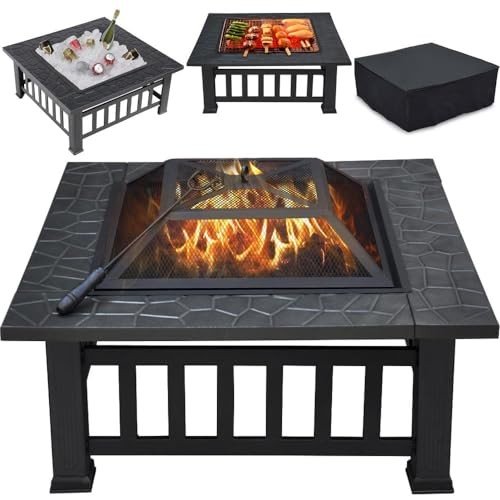15 Up-And-Coming Buy Fireplace Bloggers You Need To Watch
A Comprehensive Guide to Buying a Fireplace: Choosing the Right Fit for Your Home
Fireplaces have long been a main feature in homes, providing warmth, atmosphere, and a meeting place for families and pals. Whether Fireplace Deals UK developing a brand-new home, refurbishing an existing area, or just wanting to update your existing setup, buying the right fireplace can make all the distinction. This guide aims to offer a detailed overview of various fireplace choices, considerations for setup, and tips for maintenance.
Kinds of Fireplaces
When considering a brand-new fireplace, property buyers will find numerous types to pick from. Each type features its own special features, advantages, and downsides. Below is a breakdown of common fireplace types:
Fireplace Type
Description
Pros
Cons
Wood-Burning
Traditional option using logs for fuel.
Genuine experience, strong heat source.
Requires routine maintenance, fuel storage, and ventilation.
Gas
Uses natural gas or propane, typically with a vented or ventless choice.
Easy to use, less upkeep than wood.
Needs a gas line, may lose some ambiance.
Electric
Plug-and-play choices with no requirement for venting, offering simulated flames.
No setup necessary, safe for houses.
Does not have the authenticity of genuine flames.
Ethanol
Uses bio-ethanol fuel in a portable or set system.
Clean burning, no venting required.
More expensive fuel expenses, minimal heat output.
Pellet
Burns compressed wood pellets for fuel, similar to wood-burning.
Ecologically friendly, low emissions.
Requires electricity for operation, particular fuel needed.
Secret Considerations When Buying a Fireplace
1. Space Size and Layout
The fireplace must appropriate for the size and design of the space. A fireplace that is too large may overwhelm the area, while one that is too small may not successfully heat the location.
2. Heating Needs
Think about just how much heat you need for the space. An electric fireplace may suffice for a smaller room, while a wood-burning or gas fireplace is perfect for larger areas requiring considerable warmth.
3. Visual and Style
Fireplaces come in a range of styles, from contemporary to rustic. It's important to pick one that matches the overall decoration of your home.
Popular Fireplace Styles:
- Modern smooth designs
- Traditional elaborate finishes
- Rustic stone or brick
- Minimalist electric designs
4. Fuel Source
Choosing a fuel source is vital for function in addition to choice. Property owners need to think about the accessibility, expense, and benefit of the fuel they want to utilize.
5. Installation Requirements
Understand the setup requirements, as some fireplaces, specifically wood-burning units, need a chimney, while others might be more straightforward to set up. House owners may require to speak with professionals to guarantee correct installation and compliance with local codes.
6. Budget plan
Fireplaces can range significantly in rate from budget-friendly electric designs to high-end gas and wood-burning systems. Aside from the preliminary purchase cost, think about setup costs and continuous fuel expenses.
Setup Process
Installing a fireplace is a substantial job that may need expert assistance. Here is a summary of the basic steps included:
Planning and Design
- Examine areas and designs based on design and heating requirements.
Get Necessary Permits
- Examine local building policies and obtain any needed authorizations for setup.
Select a Professional Installer
- Consider working with a certified specialist for safety and compliance with codes.
Prepare the Installation Site
- Clear the area and established any needed products or support structures.
Follow Manufacturer Instructions
- Follow particular standards provided by the fireplace manufacturer during setup.
Final Inspection
- After installation, guarantee a last examination is carried out to verify the unit's safety and functionality.
Upkeep Tips for Your Fireplace
To ensure durability and optimum efficiency of your fireplace, routine upkeep is essential. Here are some pointers to keep your fireplace in great shape:
Wood-Burning Fireplaces
- Tidy the chimney at least as soon as a year to prevent creosote accumulation.
- Usage skilled wood for less smoke and much better effectiveness.
- Inspect the fireplace structure for fractures or wear and tear.
Gas Fireplaces
- Examine gas connections for leaks occasionally.
- Tidy the glass and the burner for optimum efficiency.
- Schedule yearly servicing with a qualified technician.
Electric Fireplaces
- Dust and tidy the system frequently.
- Inspect connections and change any malfunctioning parts if required.
- Ensure the unit is shimmering tidy before use each season.
Ethanol and Pellet Fireplaces
- Keep fuel sources saved safely and far from heat.
- Clean the burner and guarantee no clogs occur.
Frequently asked questions
Q: What kind of fireplace is most effective for heating?A: Gas fireplaces and
pellet ranges tend to have greater effectiveness, converting more energy to heat compared to wood-burning alternatives.
Q: Can I set up a fireplace in any room?A: While many spaces can accommodate a fireplace, ventilation, offered space, and regional regulations may affect expediency.
Q: Are electric fireplaces safe?A: Yes,
electric fireplaces are generally very safe, include no genuine flames, and typically include functions that avoid overheating.
**Q: How do I choose the best size fireplace?A: Consider the square footage of the room and seek advice from suppliers about recommended BTU ratings for heating efficiency. Acquiring a fireplace is a considerable
decision that can significantly enhance your living space. By considering the type of fireplace, your heating needs, setup requirements, and continuous upkeep, homeowners can pick the perfect system to meet their preferences and boost their home for years to come. Whether you lean toward a traditional wood-burning fireplace or a modern electric option, the right fireplace will provide heat, comfort, and style that can be cherished for generations.  **
**